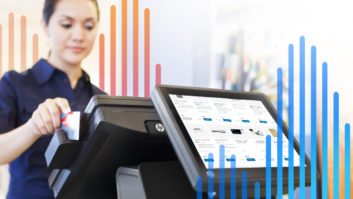TWICE:A year ago pundits had written off brick-and-mortar stores, with showrooming as their epitaph. But to paraphrase Mark Twain, it appears reports of retail’s death were greatly exaggerated.
David Workman, ProSource: You can over-generalize a trend, and showrooming was a nice label. If there was any benefit to the term, it made retailers look very hard in the mirror and find that they had some deficiencies in their own operation.
Maybe retailers needed to look real hard at whether they were bringing an experience in front of the consumer. That is why a year later, with some of the improvements that you are seeing in various retail operations, the showrooming thing has now been played back down a bit.
There is a place for both types of retail. People want to touch goods, but there is a lot that goes into it. Pricing has to be on par. The Internet provides convenience as its biggest advantage, and retail should provide experience as its biggest advantage, with price being neutral between the two channels. If you break it down that simply, then both channels have a very viable place in the marketplace. If you can’t be price competitive, naturally customers will opt away from you.
TWICE:How viable is price-matching as a strategy?
Workman: Margins are determined more by mix than they are by the absolute margin per item. Physical retail has the one big advantage of the market basket. The Internet tends to be more single-item sale by nature, but with a properly directed retail floor you have a market basket. This industry has had no-profit items forever, and retailers have made plenty of money by developing a market-basket strategy with accessories and other adjunct sales. It is what the yield sale is, not the individual product. If you can’t do that, you suffer, but if you can, you can be price competitive on anything.
Stephen Baker, The NPD Group: Dave made some great points: It is not either/or. Sometimes one is good, and sometimes the other is good.
Everyone here recognizes that you have to be online. You have to have a great online experience. You have to have a great in-store experience, and you have to find ways to bring both of those things together to take advantage of the best things we can do.
We have always had to be competitive on price, and there has always been showrooming. Now we have electronic devices, but before people would bring in ads. Is it a little easier now? Maybe, but I don’t think the fundamental way people shop has changed. The biggest thing is the convenience factor and the ease of shopping online. How do I take that ease and move it into the store as well, and make all of that stuff work together?
Rick Souder, Crutchfield: The more things change, the more they stay the same, as you point out. It is the same for a retailer: You have to differentiate yourself and give your customer a reason to shop you.
There are a variety of customers. For some, price is the most important thing. Price is important for everybody, but maybe not the most important for some. A lot of people shop on value or for other services that several of us provide. It’s been that way forever. I don’t know that it will change. The mechanisms will change, but there is still going to be a diverse audience.
If you differentiate, okay. If you have a low cost structure and can win on price, okay. But if you are in the middle, it’s going to be difficult.
Workman: Another interesting trend is the re-invention of the big box. There are ways of presenting technology and brands differently, versus the shelf merchandising concepts of the past.
You see some of that with Best Buy. Outside of our industry too there are efforts to take a big store and make a store-in-a-store. That is a more exciting trend for the brick-and-mortar side as we see better brand definition at retail and the ability also to service those brands with better knowledge, experience and an interactive ecosystem.
Brick-and-mortar still has to re-invent itself and is in the process of doing so and becoming a little bit different. Twenty years ago the world was built on big box, and it was built on two main tenets, lower price and bigger selection. The Internet took that away. Now it really only has one choice, and that is to reinvent itself around something else, which is where you are starting to see some of the evolution of merchandising concepts within the stores.
TWICE: Will store-in-store eventually lead us to the Japanese model, where vendors essentially rent retail floor space?
Workman: Good retailers are collecting rent already.
Mike Abt, Abt Electronics: Stores like Macy’s have done that for a long time.
Fred Towns, New Age Electronics: There is still a line to get into an Apple Store. There is still a queue to get serviced. If you want to go buy something, you have to get on the queue before you even buy it unless you go online. Kids’ faces light up when they pass by the Apple Store because they want to go in and try whatever is there, to play with the technology, experience it and touch it. We talked about Bluetooth before. Well, they have a class where someone will teach you how to use Bluetooth. You come in on this day, and you can sit down and learn how to use it.
I’ve been servicing Mike’s world for a long time, and have seen the evolution of the Abt store as well over the years. Every time you walk in you want to play with things, touch things and see them. It’s all there and available.
It is that kind of experience that I think is going to really change things. People are demanding it. There is still a time and a need and a place for a retail store. You can get great information on the web. You can get a great experience on the web, but it is only as good as the device you are looking at.
TWICE:Apple does get all the attention, but Abt is probably the father of the experiential CE store. Where do you get your inspiration?
Abt: We go to Vegas every year. If you just look around, this place is entertaining. It’s a fun, fun place to be for most people for a few days. So for the hour or two that they stay in your store, we try to provide an exciting experience. People like coming into a great retail store. It’s a little more of a challenge online, but we just entertain people.
TWICE: Similarly, RadioShack is in the midst of store remodel with the goal of creating what your CEO Joe Magnacca described as a CE playground.
Paul Rutenis, RadioShack: RadioShack is looking for a change — a dynamic change in the way retail is looked at and where we play in the consumer electronics platform. The new stores that you are seeing from us are the wave of the future. People like to go to an interactive store. Whereas RadioShack customers come in, they ask a question, they get the product and they leave, our mode is to try to get them to interact with the store. That is what you are seeing in the concept stores that we are building.
Tom Hickman, electronics senior VP, Nationwide Marketing Group: We are probably the most heavily skewed to retail of everybody here. The challenge is you have to have technology, and you have to have a great experience when they get there. If you have those two things and an educated, powerful sales force, you can be very successful.
TWICE: So the showroom will never be obsolete?
Towns: How do you look at a 4K television on a PC when you are buying online? You can read about the specs, but you can’t experience what it looks like. There is still a need to go look at it in the showroom.












